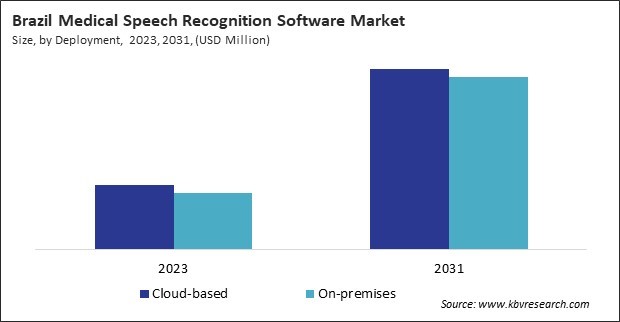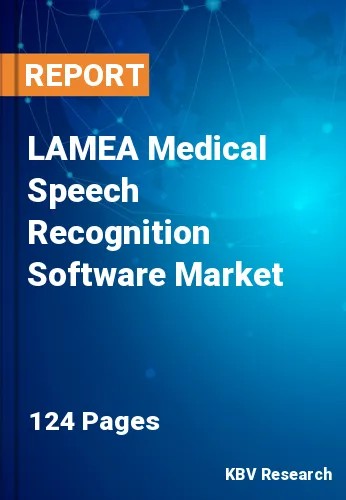The Latin America, Middle East and Africa Medical Speech Recognition Software Market would witness market growth of 13.4% CAGR during the forecast period (2024-2031).
The Brazil market dominated the LAMEA Medical Speech Recognition Software Market by Country in 2023, and would continue to be a dominant market till 2031; thereby, achieving a market value of $66.2 million by 2031. The Argentina market is showcasing a CAGR of 14.9% during (2024 - 2031). Additionally, The UAE market would register a CAGR of 12.3% during (2024 - 2031).

Small and medium-sized healthcare practices are increasingly adopting speech recognition software due to its affordability and the ability to streamline documentation processes. Cost-effective solutions and subscription-based models make it accessible for smaller practices that need to enhance efficiency without significant upfront investments. The scalability of speech recognition solutions allows smaller practices to implement the technology as they grow, adapting to their expanding needs and integrating more advanced features over time.
There is a notable trend towards incorporating Artificial Intelligence (AI) and machine learning algorithms into speech recognition software. These advancements improve the accuracy of voice-to-text conversion by learning from user interactions and adapting to specialized medical vocabularies. AI integration also enhances the software’s ability to understand the context of medical conversations, leading to more precise transcriptions and reducing the need for manual corrections.
The move towards digitalization includes developing centralized health information systems across Saudi Arabia. This software can streamline data entry into these systems, ensuring accurate and efficient management of patient records. As healthcare data becomes more digitized, integrating speech recognition software supports big data analytics by providing accurate and structured data input for analysis and decision-making. Funding for better healthcare services includes investments in technologies that improve clinical documentation. This software provides accurate and efficient transcription of patient information, addressing the need for high-quality and error-free records. Increased funding to improve healthcare workflows leads to the adoption of medical speech recognition software, which reduces the administrative burden on healthcare providers and enables them to concentrate more on patient care. Thus, rising digitalization in the healthcare sector and rising funding for better healthcare services are driving the market's growth.
Free Valuable Insights: The Worldwide Medical Speech Recognition Software Market is Projected to reach USD 3.3 Billion by 2031, at a CAGR of 10.8%
Based on Deployment, the market is segmented into Cloud-based and On-premises. Based on Functionality, the market is segmented into Front-end Speech Recognition, Back-End Speech Recognition, and Voice Command and Control. Based on End Use, the market is segmented into Doctors & Physicians, Radiologists, Medical Transcriptionist, and Other End Use. Based on countries, the market is segmented into Brazil, Argentina, UAE, Saudi Arabia, South Africa, Nigeria, and Rest of LAMEA.
By Deployment
By Functionality
By End Use
By Country
Our team of dedicated experts can provide you with attractive expansion opportunities for your business.

